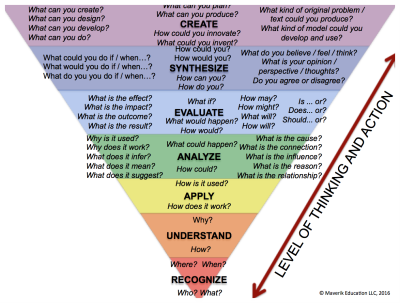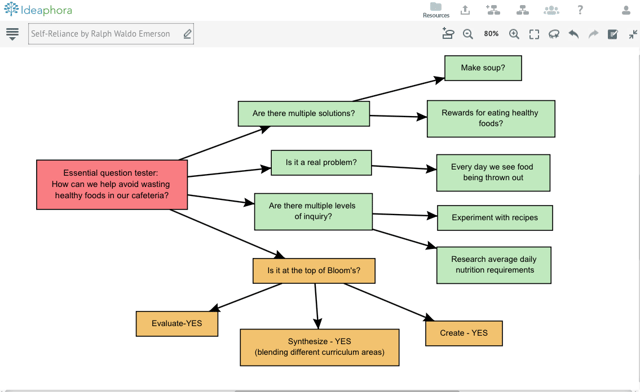Small children learn by asking questions and testing the answers they receive. This tendency forms the roots of critical thinking. Unfortunately, question-generation eventually takes a backseat to receiving and storing information both at home and at school as children mature. In a traditional classroom, questions are the provenance of the teacher. In a project-based learning classroom, however, questions drive the entire learning process.
These questions are developed and tested in teacher/student collaboration. While the curriculum mapping we discussed in my last post is more for teachers, the essential question (sometimes referred to as the driving question) is best determined by students with teacher guidance. Why? Because such an endeavor encourages students to think deeply and critically, helps build their connection to the topic and buy-in to the project.
The essential question is defined by some basic parameters:
- It is likely to present many different solutions and leads to no obvious correct answer. This ambiguity leads to discussion and negotiation among students.
- Its solution addresses real life problems or s real world issues.
- There are multiple opportunities for further questions, information gathering, idea-testing as the project develops (Is this the best way? Who can we ask? Where will we find this information?)
- It is at the top of the Revised Bloom’s Taxonomy.

In my last post, I used an example of students developing a healthy smoothie recipe for their school cafeteria. In this case, the essential question might have been: How can we help avoid wasting healthy foods in our cafeteria? As students discuss the project, teachers can help them refine their thinking, and use an Ideaphora map to test the question against the requirements:

Clearly, even at this stage, students are getting great practice in inquiry related to a real world application. Further, the very act of forming questions triggers their minds to connect with what they already know, what they suspect, and even the order in which tasks might be accomplished, These thoughts will be formalized in the project planning stage, our next post, but, with the help of the brain’s invisible workings, the process will have begun.
